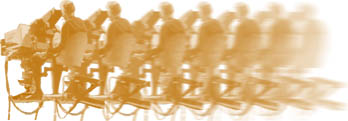Roger has been building a small collection of BBC Programmes which feature behind-the-scenes glimpses of Cameramen and other Techies, performing their daily grind at BBC Television Centre, and elsewhere. These are screen grabs from those programmes, showing some familiar scenes and faces.
A 1946 Pathe Newsreel reported the re-opening of television broadcasting from Alexandra Palace.
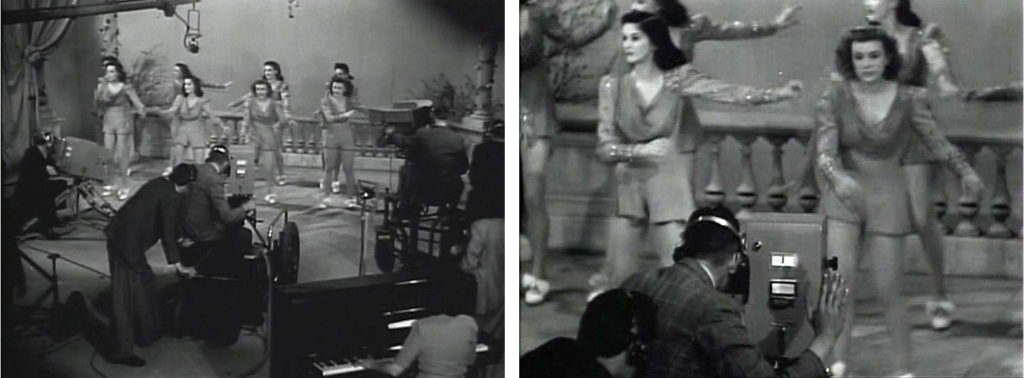
Bob Danvers-Walker announces, “The Eye-Opening Curtain Raiser features the Windmill Girls!” – with solo piano accompaniment.
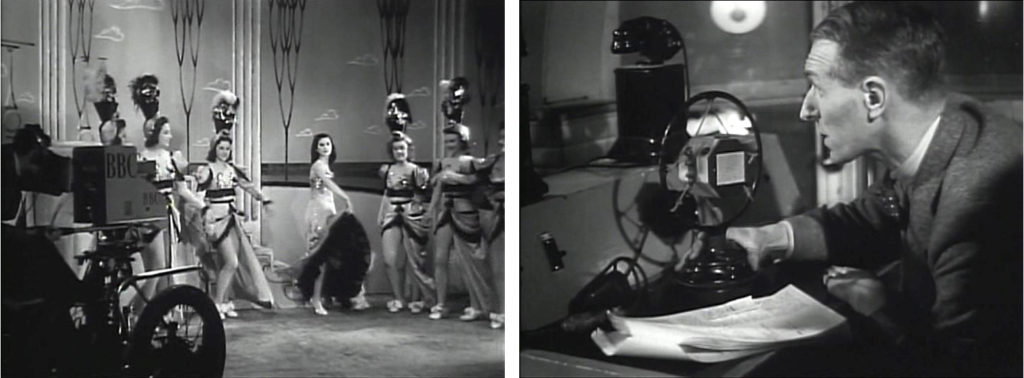
Pioneering Television Producer Cecil Madden directs – “Now, Cameras, please. Here are the instructions. I’m using all three of you in this scene . . . Camera One, I want you back, most of the time, for a postcard effect . . . Number Two, stay screwed up high, then turn and dolly onto the set.” Evidently, the terminology of television direction had not yet become standardised.
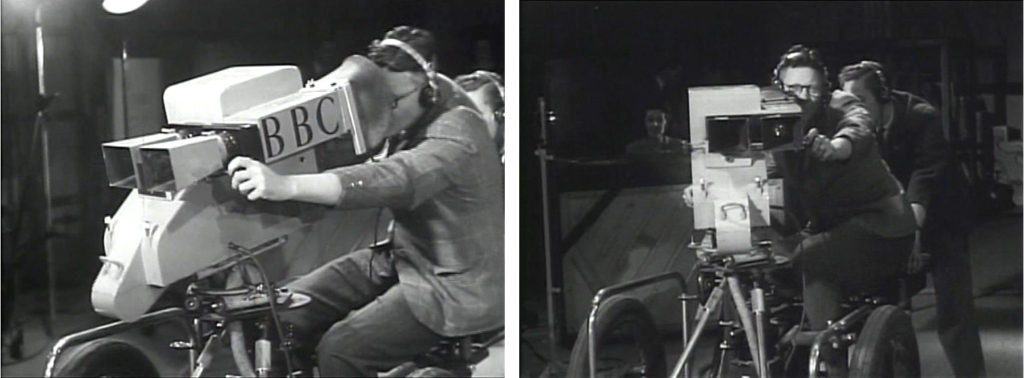
The Cameraman on the dolly is Cyril Wilkins, later to become a Technical Manager.
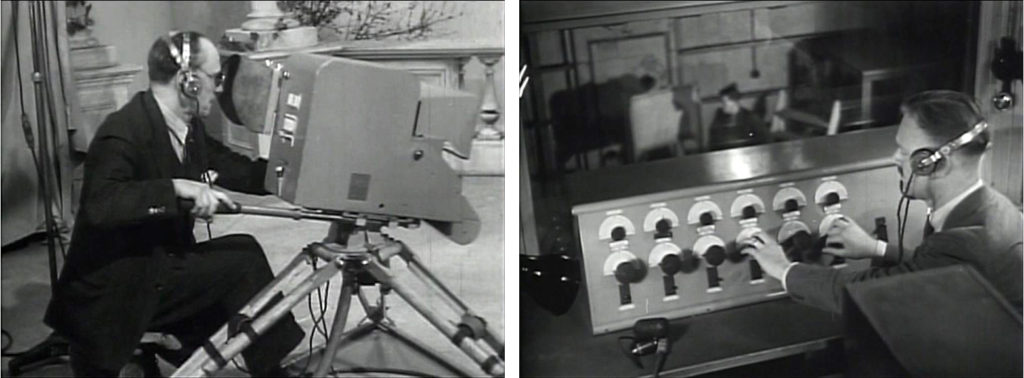
The Cameraman on the tripod may be Peter Murray, who became the Lighting Man on Crew 5. The Sound Mixer is Ronald Pottinger (“Potts”), later to become “Asst. (GENERAL) to H. T. O. Tel. S.” All are wearing the metallic, tin-can-like headphones, which gave rise to the nickname ‘Cans’.
The landmark documentary, “This is the BBC” was written and directed by Richard Cawston, in 1959. It gives an impression of the life and work of the Corporation over a 24 hour period: covering Radio and Television, London and the Regions, Outside Broadcast, the Film Unit, the World Service, the Transmitters, the Orchestras, etc. Spoiled only by some contrived dialogue, which becomes even less convincing when spoken by non-actors, it remains a monument to a magnificent organisation when it functioned as a unified whole, before politicians and management started dismantling it.
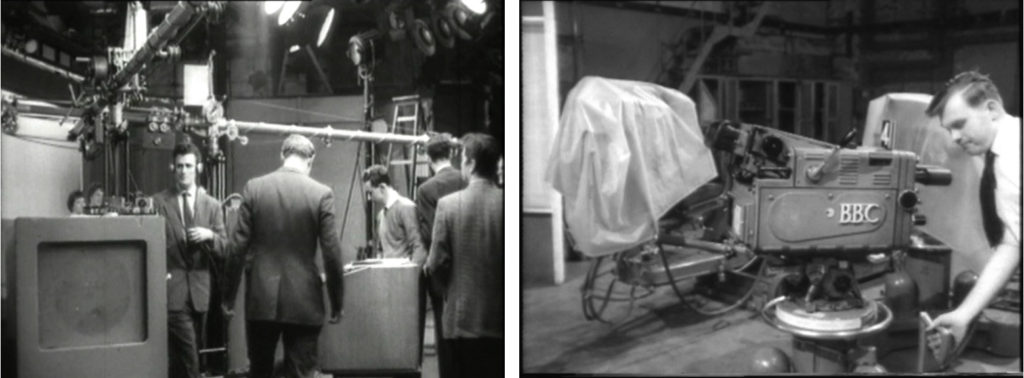
Amongst the familiar faces, John Hays appears, de-rigging the “Tonight’ programme, at Lime Grove, and Cameraman Eddie Stuart is glimpsed, pulling an HP Ped out of stores, in the days when a ped could only be steered using the tiller. The ring had yet to become a ‘ring-steer’.
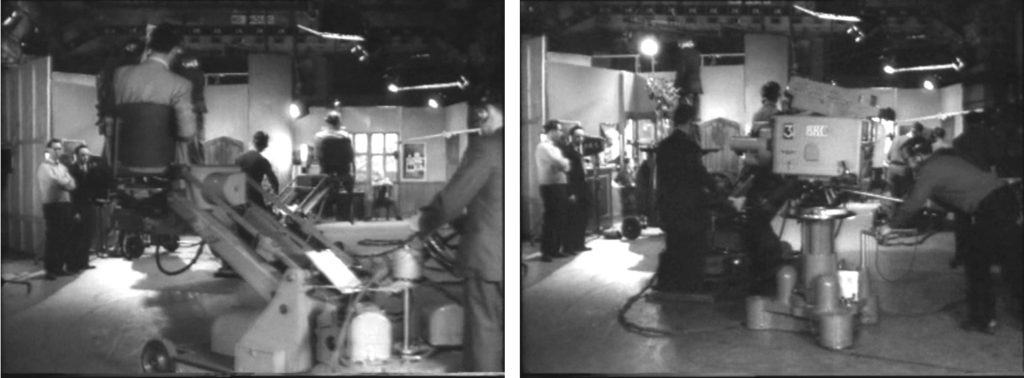
On a Schools’ Programme, two motorised Vintens glide through shot, in choreographed formation, followed by Doug Routledge pushing his ped.
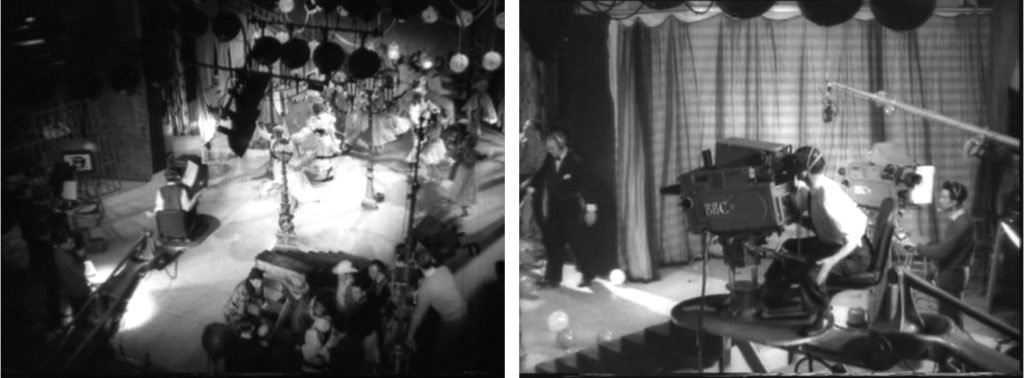
Two views of the crew at Television Theatre, working on “The Black and White Minstral Show” The Cameraman on the mole is Mark Lewis (?)

At Riverside Studios, the major costume drama is “Mother Courage and her Children” by Bertolt Brecht, starring Flora Robson. It is part of the ‘World Theatre’ strand. In the gallery Rudolf Cartier directs and Nellie Southcott vision-mixes. Does anyone recognise the P.A.?
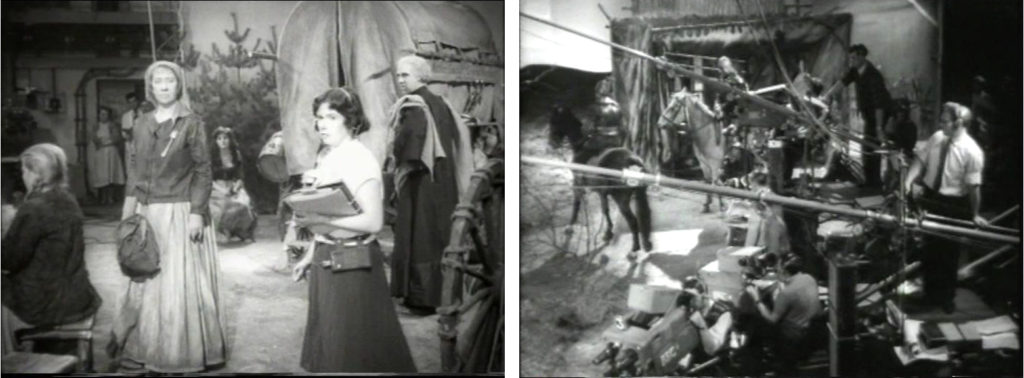
Production Manager Paddy Russell supervises the studio floor, including the horses.
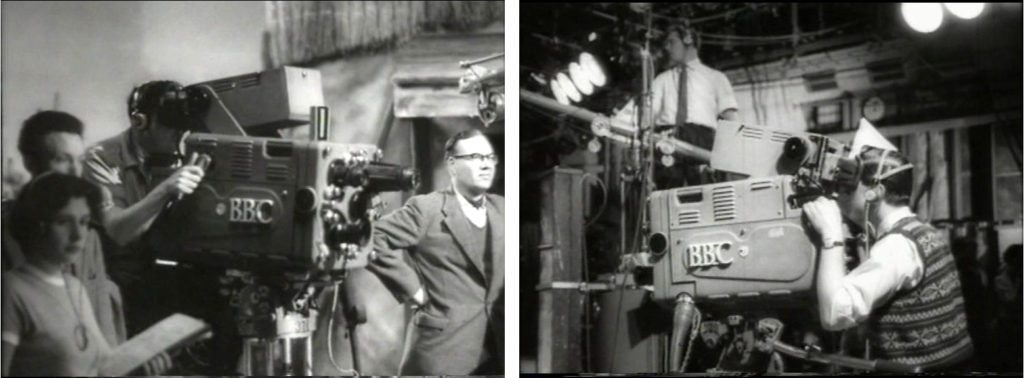
The cameras are Marconi Mark IIIs, with ‘Beer Handle’ focus controls. Judging from the uncomfortable stance of the Cameramen, they needed longer viewfinder hoods.
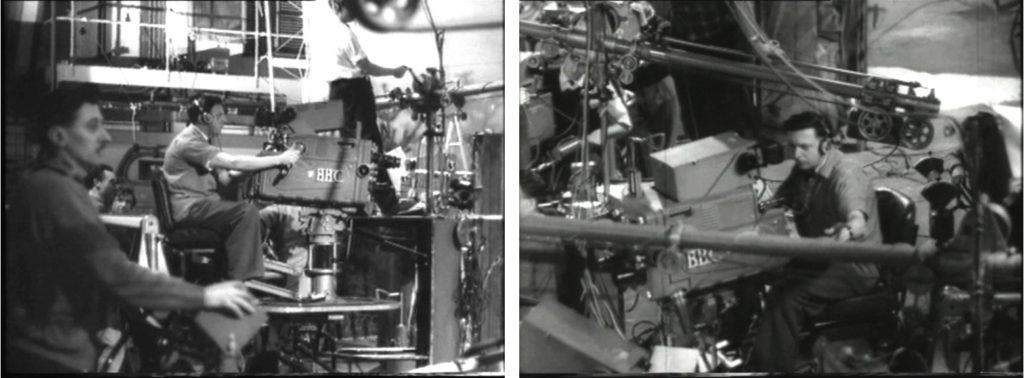
Two views of Laurie Duley, Senior Cameraman (later to become a Camera Manager), on the front of a Mole Crane. He is flanked by Mole-Richardson booms. The defocused figure foreground left is a pre-bearded Peter Ware, driving a Motorised Vinten.
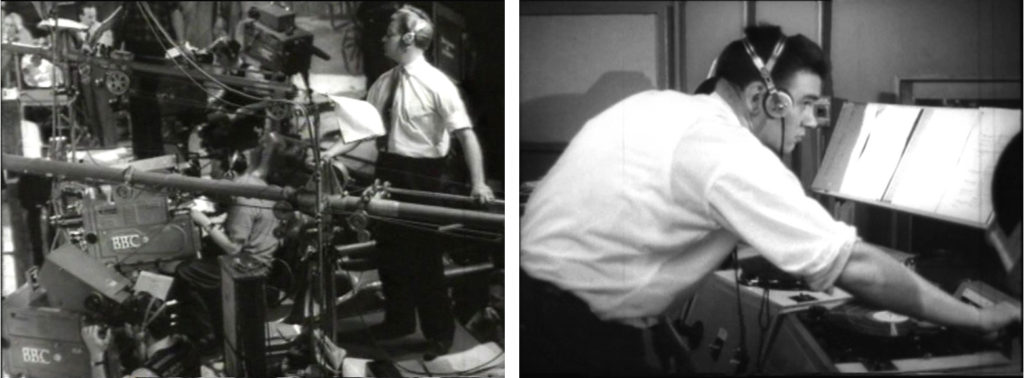
Does anyone recognise the Boom Operator? Clive Stevens plays in tape and grams. The style of headphones has not improved.
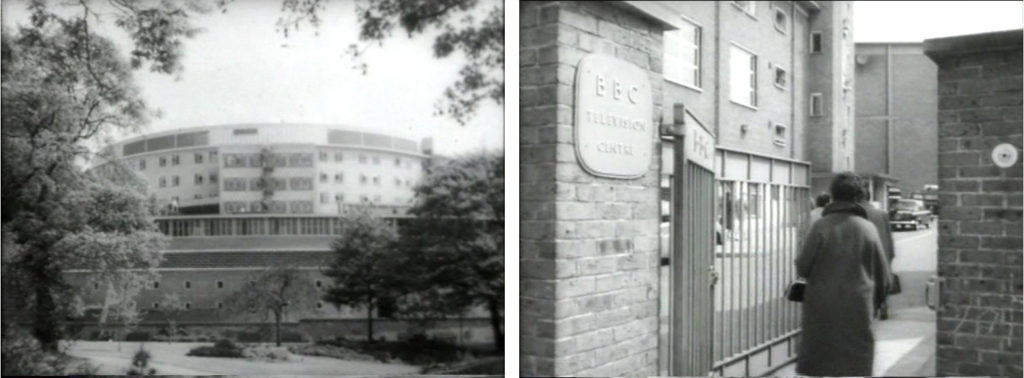
The brand-new BBC Television Centre is now occupied, but has not yet begun broadcasting.
Wednesday 29th June 1960: Broadcasting from Television Centre officially began with “First Night”, a live variety programme hosted by David Nixon and Arthur Askey.
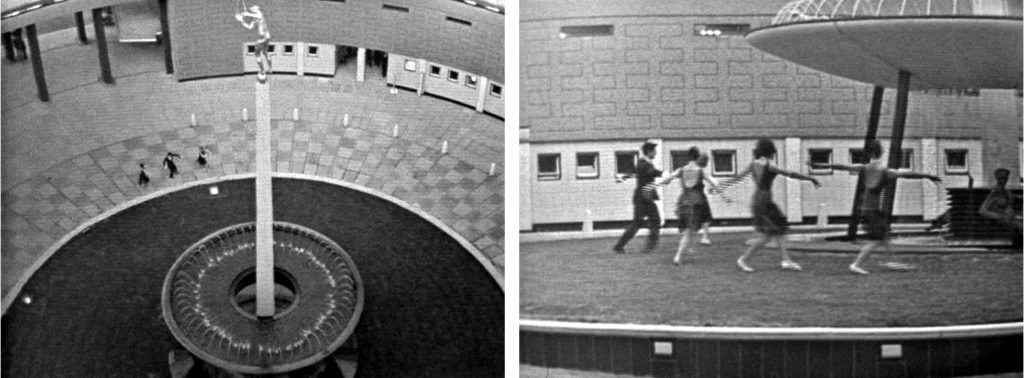
Dancers celebrate the new architecture as they cavort around the central circle . . .
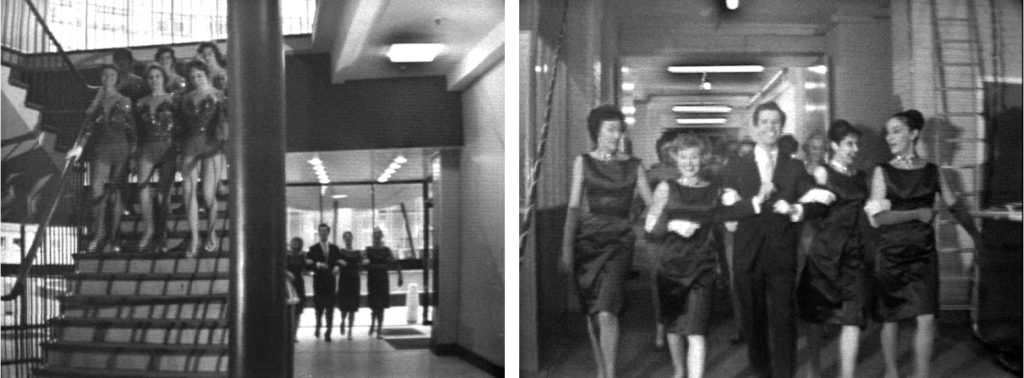
. . . through the South Hall to the Ring Road, and into TC3, the only fully functioning studio at the time.
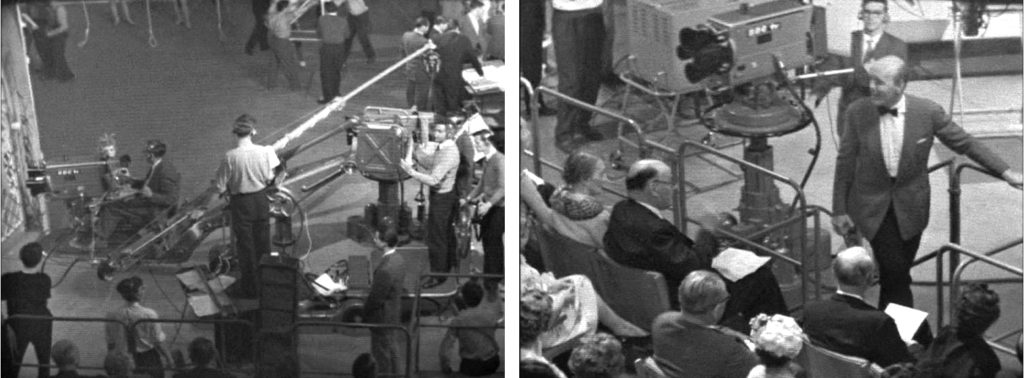
There are a couple of glimpses of the Camera Crew, featuring a Mole Crane, and an HP Ped (an HP 419, with one of the newfangled ring-steers). The cameras are now Marconi Mark IVs. The studio crew were Crew 5, with Senior Cameraman Bernard Fox, on the front of the crane, and Rodney Taylor swinging. (Anyone recognise the Tracker?) Tony Powell stands foreground of the crane. John Farr is on the ped behind David Nixon. Crew 11 were responsible for the exterior shots. Ian Ridley, who joined them the following year, was told of the great efforts made to lay a camera cable from TC3, up the South Hall stairwell, to obtain a high shot. Only when they reached the top did they realise that they’d brought the wrong end of the cable!
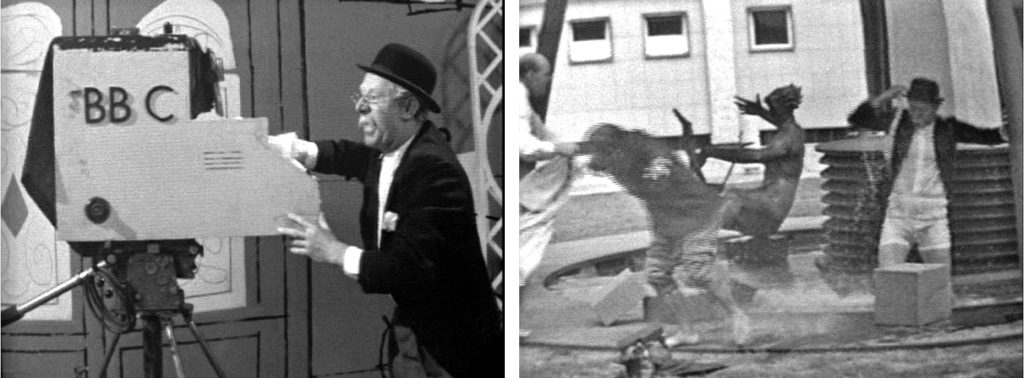
The only other camera is a mock-up operated by Mr. Pastry (Richard Hearne), who is later pushed into the central fountains – minus his trousers (such was the humour of the time!).
In March 1971, an episode of the “Paul Temple” series, was set entirely in TC1. It was called “Cue Murder”.
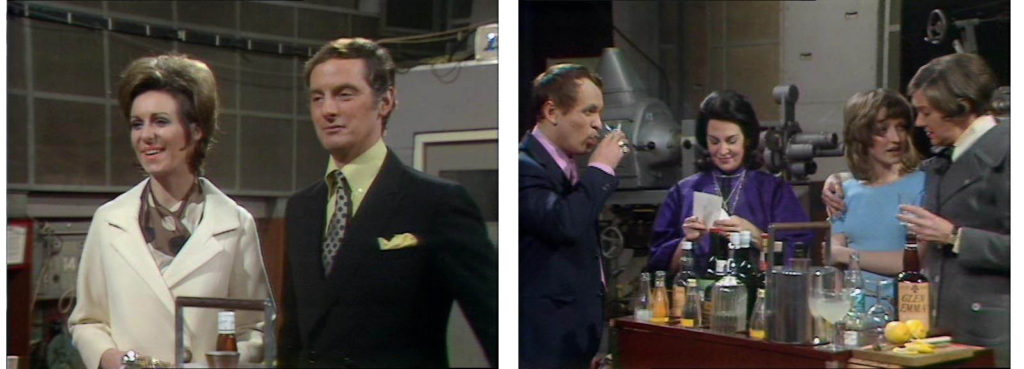
The studio, including a mighty back projector is visible behind the cast.
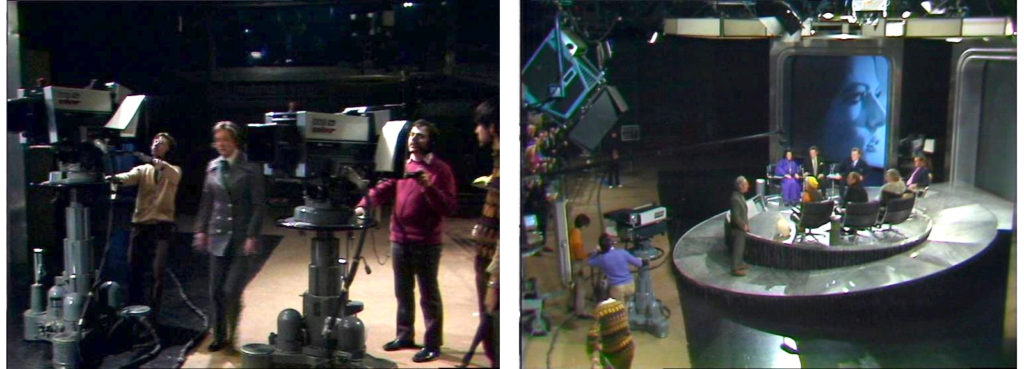
While actors play the starring roles, the Cameramen are played by Cameramen, amongst whom are Spencer Payne, Geoff Feld and David Carter.
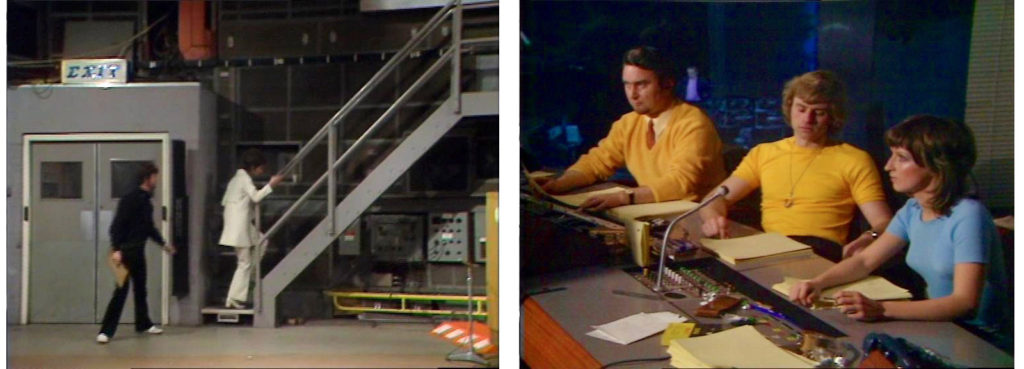
Meanwhile, in the gallery, Fred Law plays a very convincing Vision Mixer.
The documentary, “Behind the Scenes: BBC Television Centre”, was broadcast in August 1971, and presented by Norman Tozer. Less wide-ranging than “This is the BBC”, it provides a similar impression of a 24 hour cycle at T.V. Centre – from floor-paint to floor-wash. If you wish to see the whole thing, it is available as a bonus feature on the DVD of “Doctor Who: The Mind of Evil”.
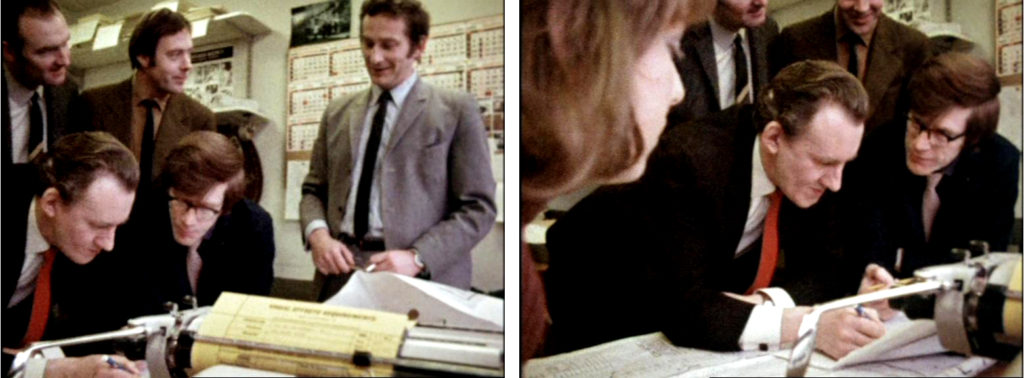
A planning meeting, for an episode of “All Gas and Gaiters”: featuring Henry Barber (T.M.), Richard Chubb (Sound), John Howard Davis (Producer), John Dixon (Lighting) and Heather Gilder (Vision Mixer). The Designer is Graham Oakley (?) who would later become a children’s author.
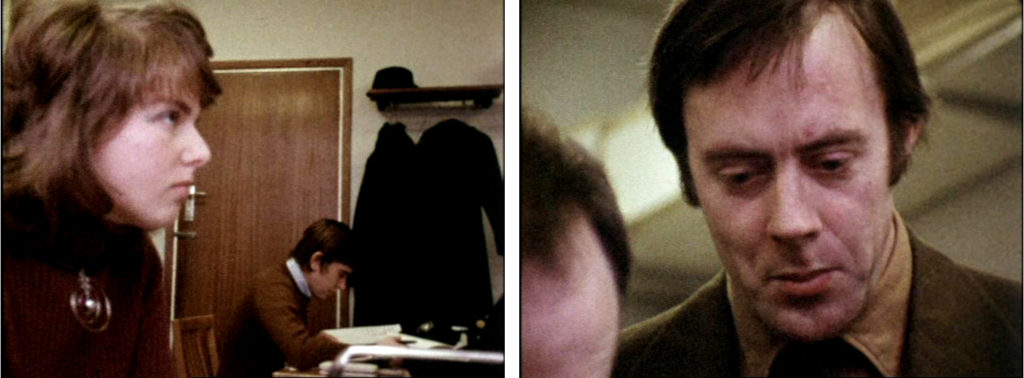
Heather Gilder and Dickie Chubb both get close-ups.
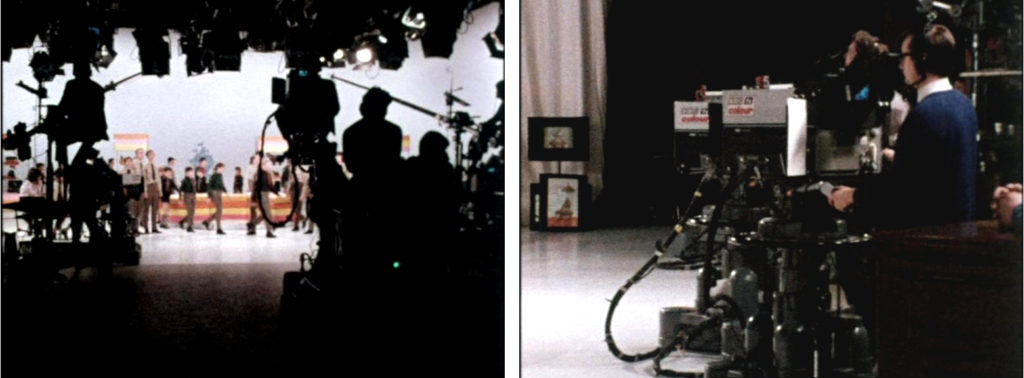
“Blue Peter”: a silhouetted crew and Dave Lawson on Camera 5.
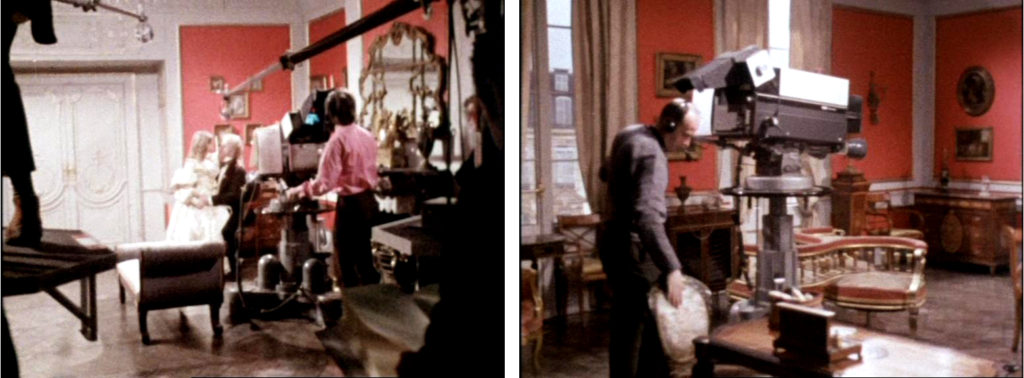
Meanwhile in TC3, there is Multi-Camera Classic Drama: “Cousin Bette”, based on the novel by Honoré de Balzac, starring Margaret Tyzack and Helen Mirren. Is that Brian White in the pink shirt? And Peter Grainger on set.
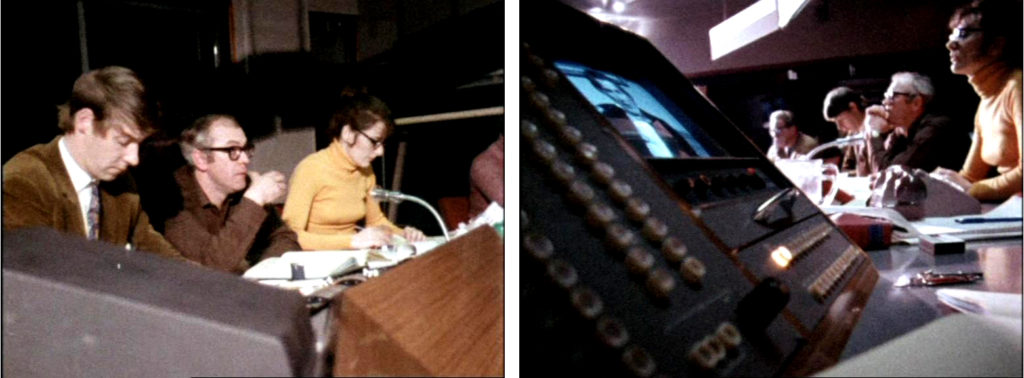
The gallery of “Cousin Bette”. Vision Mixer, Dave Hanks, and Director, Gareth Davies. (anyone recognise the P.A. or the TM2?)
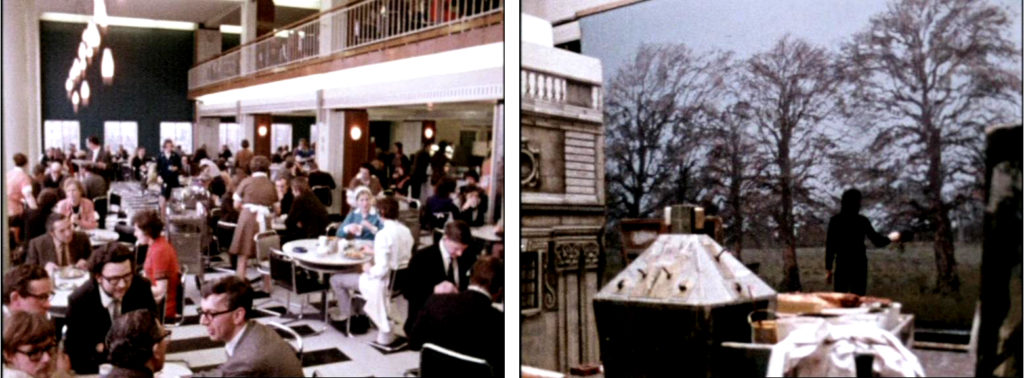
Elsewhere in TV Centre: the lunchtime canteen (First Floor). There appears to be a Sound Crew seated foreground left: with Richard Davies, Ian Tomlin, Ron Sproston and Doug Prior, in the corner of frame. And Scenic Artists at work, with that Tardis-like hoist control in foreground.
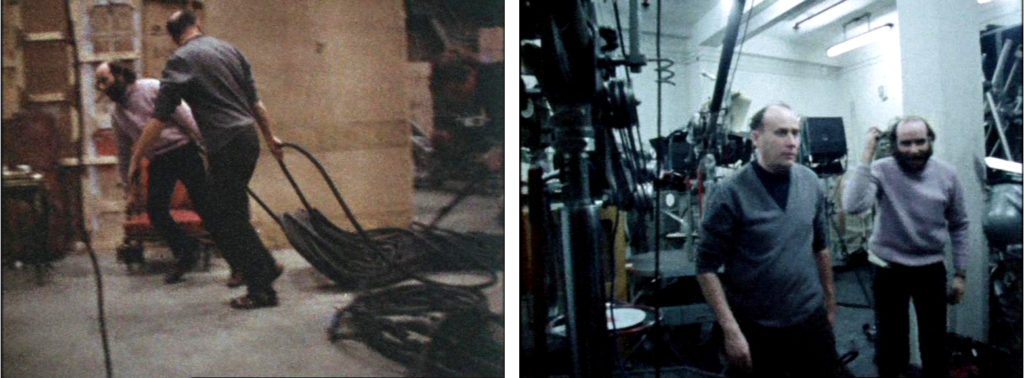
Back in TC6, the de-rig of “Cousin Bette”. Peter Grainger and Mike Minchin drag a G101 camera cable into Tech Stores.
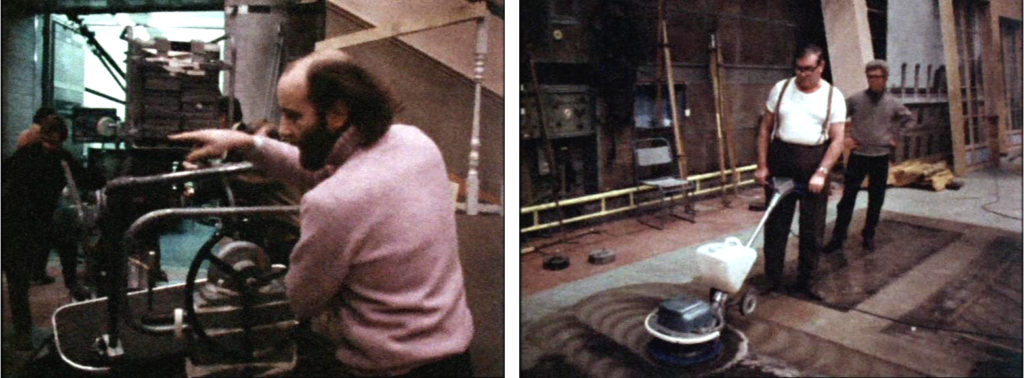
Mike Minchin steers the Mole Crane into Tech Stores, and those wonderful floor washing machines begin liquidating the floor paint.
“One Man’s Week”, starring John Wells, was broadcast in November 1971, and featured some nostalgic parodies of life in Old Pres B.
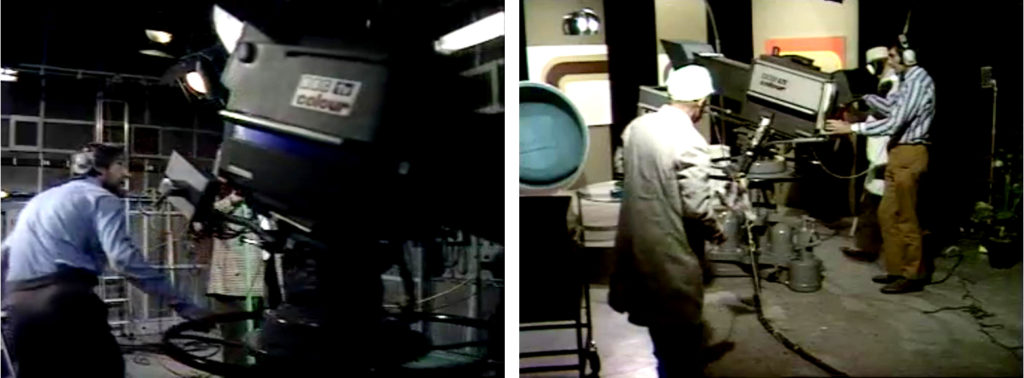
A couple of Cameramen appear in vision. Rex Palmer (we think) is seen briefly, dragging his mighty Marconi MkVII camera, with extended ring-steer, through frame. And Mike Turner is seen operating, in the days when he was still a Cameraman. Exactly why there are men, dressed as Painters, moving scenery and tidying Sparks’ cables is unclear, but you can’t get everything right.
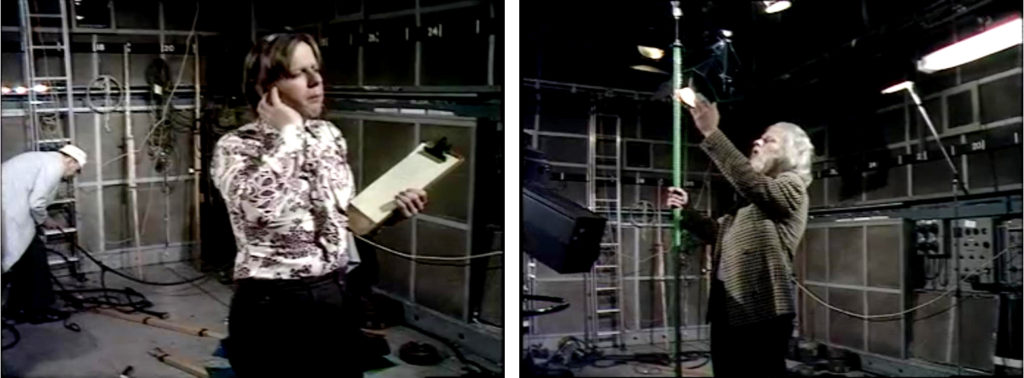
You may not recognise the camp Floor Manager, or the veteran Lighting Man. That’ll be because they’re both John Wells in costume and make-up: doing a worryingly accurate impression of the real-life stereotypes. (He also plays a Make-Up Girl, but that is much too worrying!)
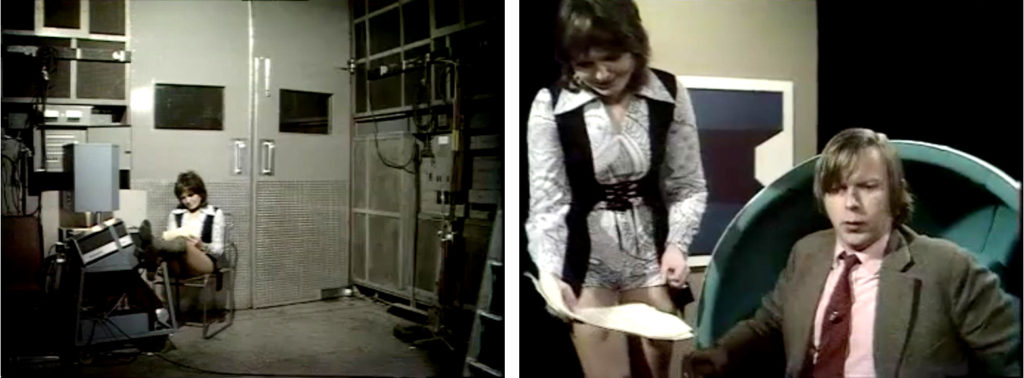
And anyone who was around at the time, will probably recognise Trish Phillips, the petite Autocue Lady, wearing boots and hot-pants, at the request of the production.
In November 1977, “Multi-Coloured Swap Shop” gave a brief but live glimpse of behind-the-scenes techies.
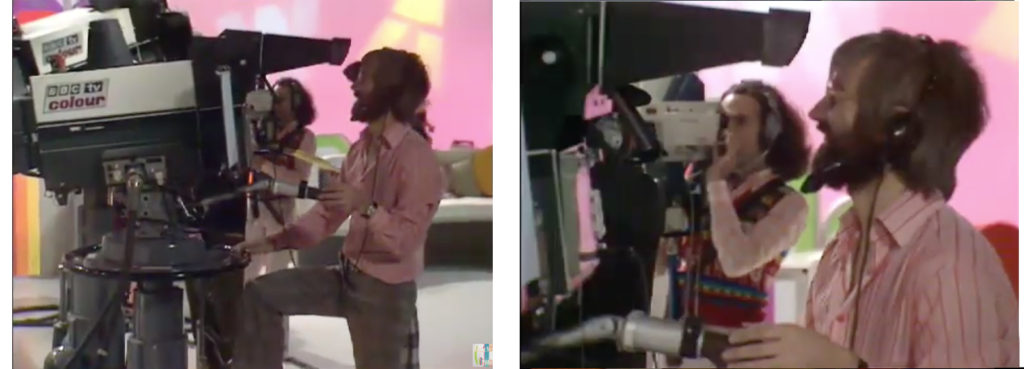
It included shots of Brian White (still in a pink shirt) and Rodney Taylor, photographed by Doug Coldwell.
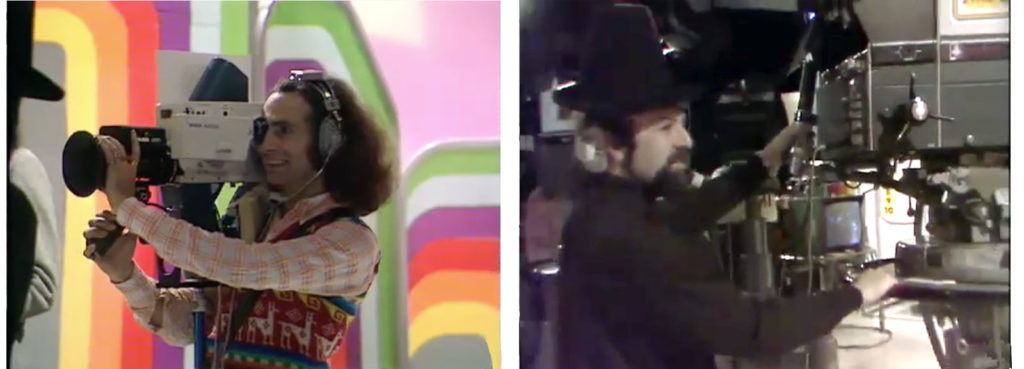
Rodney was seen modelling the latest in hand-held cameras: the Bosch-Fernseh KCR-40, and taking a brief shot of John Morris.
“A Good Job With Prospects” was broadcast in March 1984. It was a Schools Programme, describing the technical and operational jobs available in television. (Before John Birt started abolishing both the jobs and the prospects.)
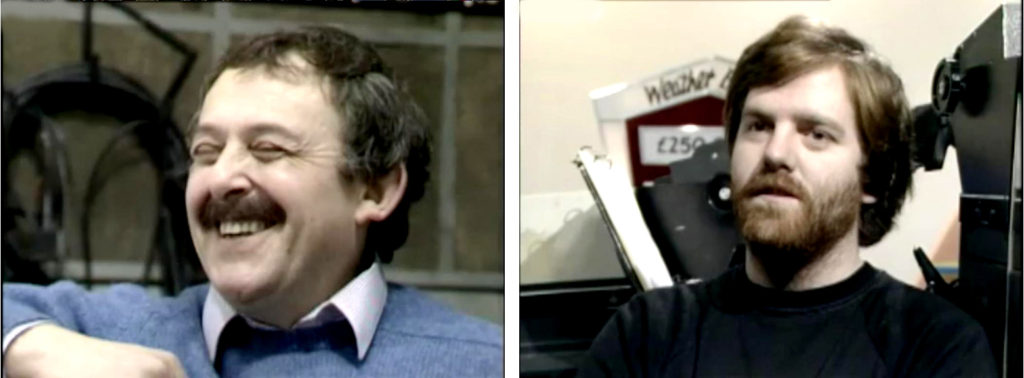
Geoff Feld and Chris Miller both play starring roles. They even get speaking parts.
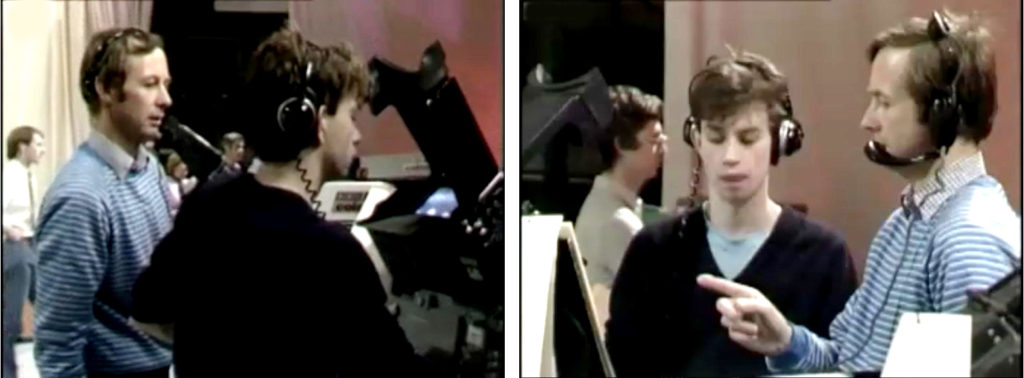
John Hoare appears, giving instruction to Camera Trainee John Walker.
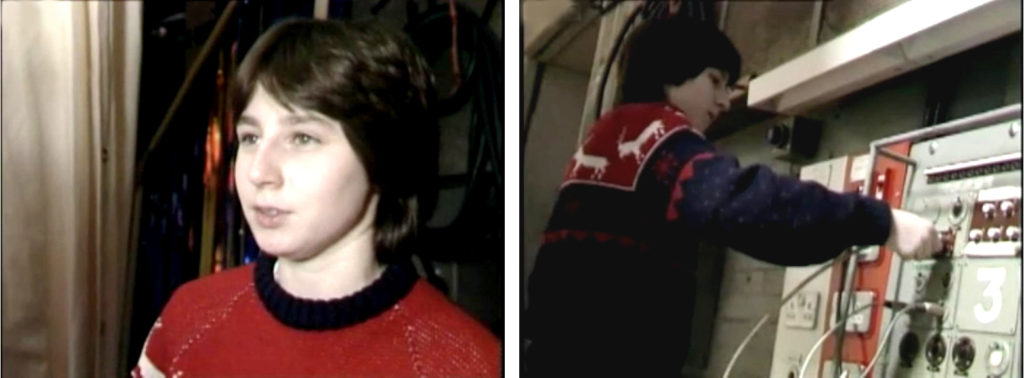
Trainee Camera Operator, Ann Ludlow (later Ann Larkham), also stars, and plugs up a monitor.
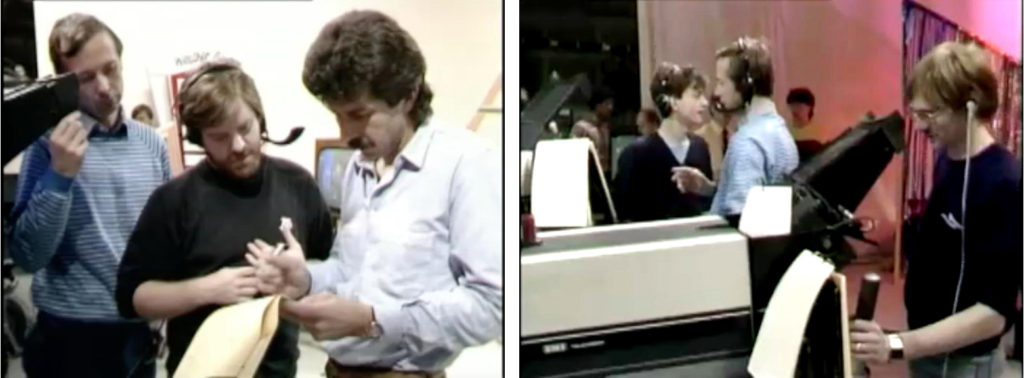
Chris Miller and John Hoare give advice to Mike Turner, who is now the Director, while Dave Whitaker plays a non-speaking role, foreground right.

Trainee Sound Operator, Richard Hersee (later to become a Resource Co-ordinator), and Sound Operator Keron Steele also play starring roles.
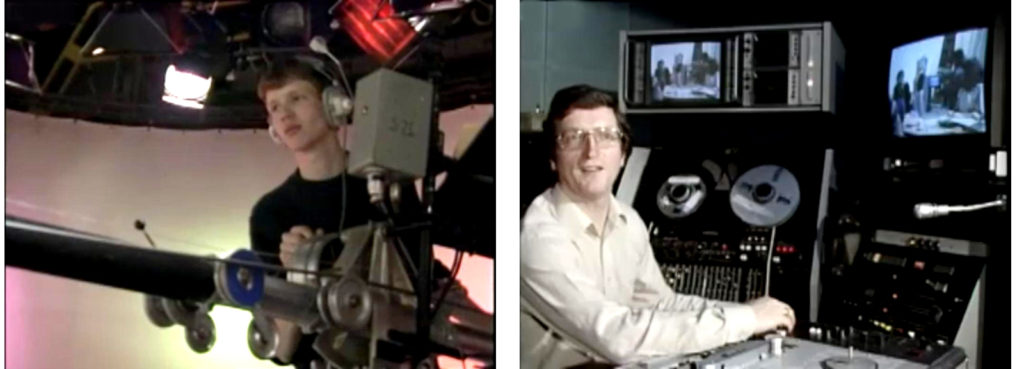
The much featured but non-speaking boom operator is Steve Ayres, and the VT Editor is Steve Newnham. (I’m told he has a famous brother!)
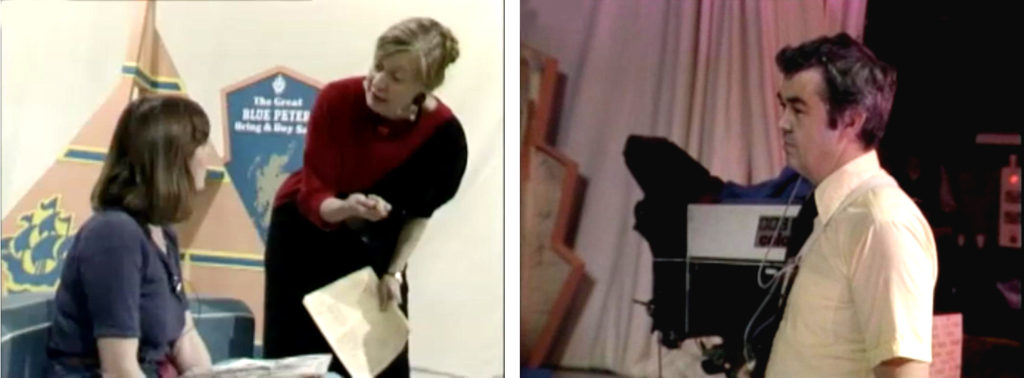
Editor Biddy Baxter gives notes to Janet Ellis, and Floor Manager Geoff Walmsley calls, “Notes on cans at ten-to. Thank you, Studio!”
To be Continued . . .
